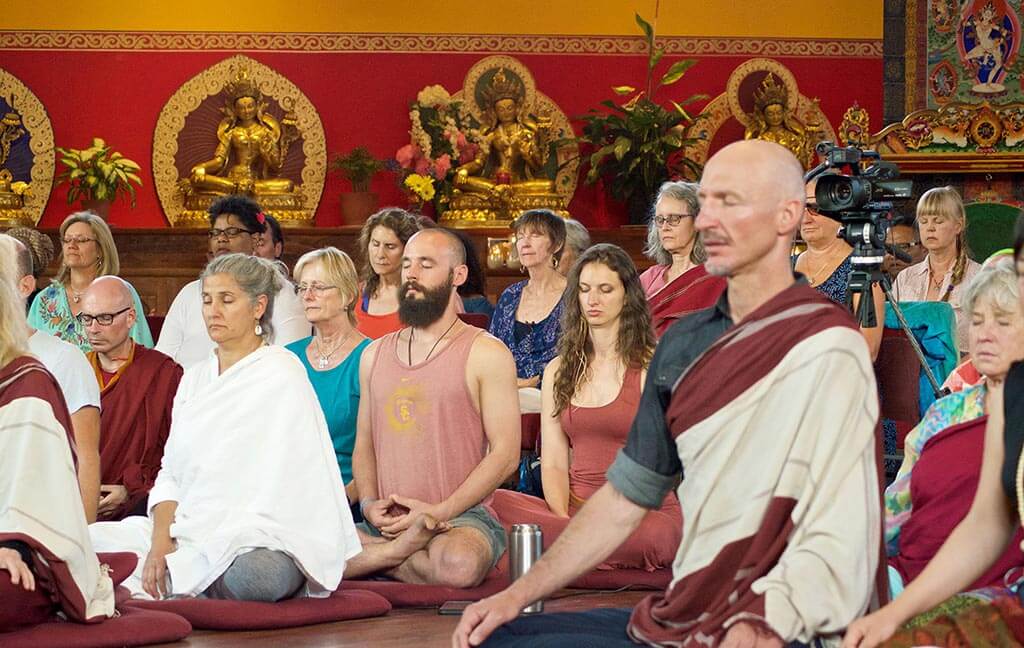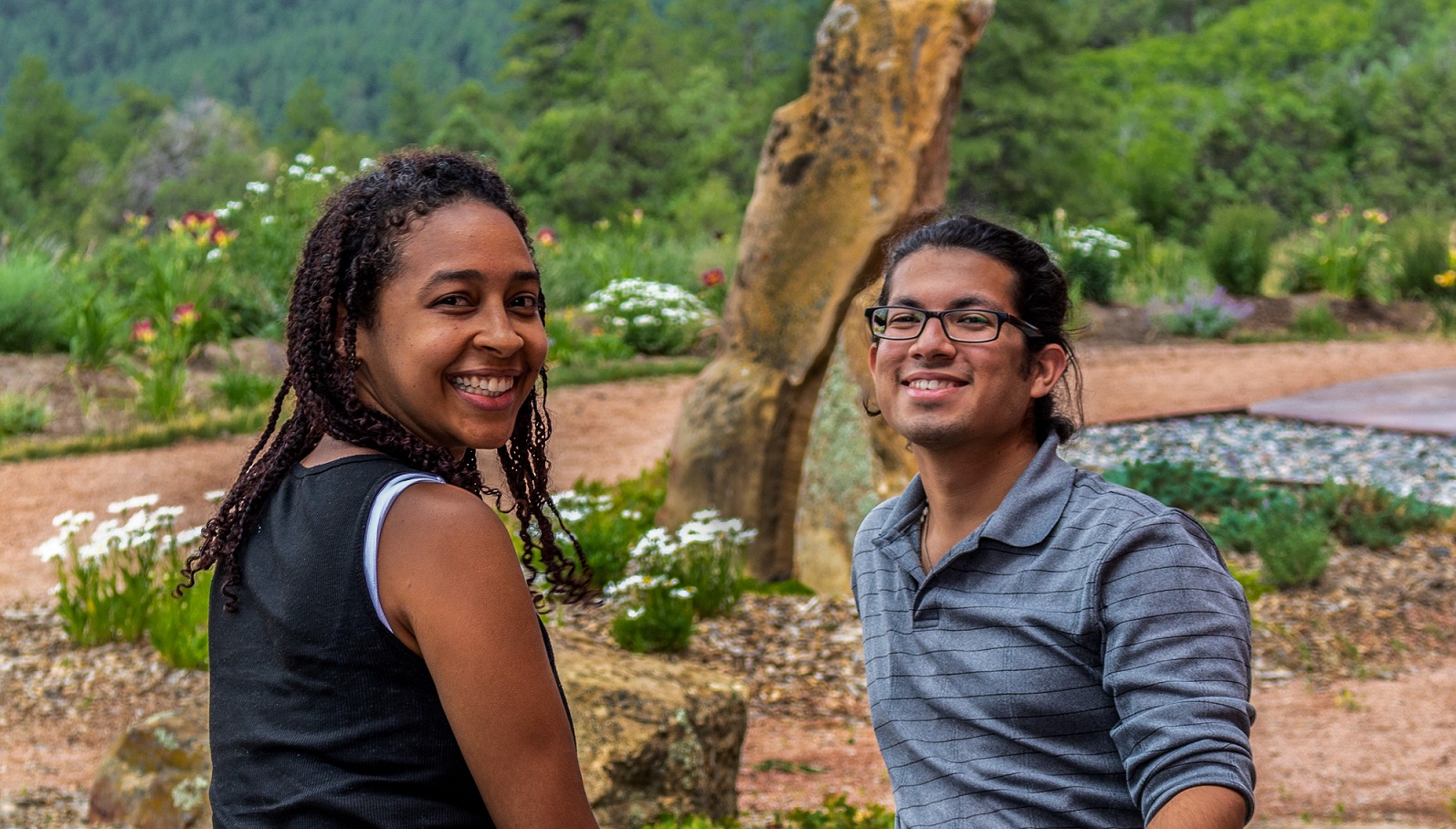Try A Relaxation Practice
Meditation has been scientifically proven to boost the immune system, lower blood pressure, relieve depression, increase productivity, and promote creative thinking. Mindfulness, which has its roots in the teachings of the Buddha, can be a transformative practice for Buddhist and secular practitioners alike. The practice of compassion, or Bodhicitta which is central to the Buddhist path, has also been proven to improve health, emotional well being, increase happiness, improve personal relationships, and benefit families and communities at large.
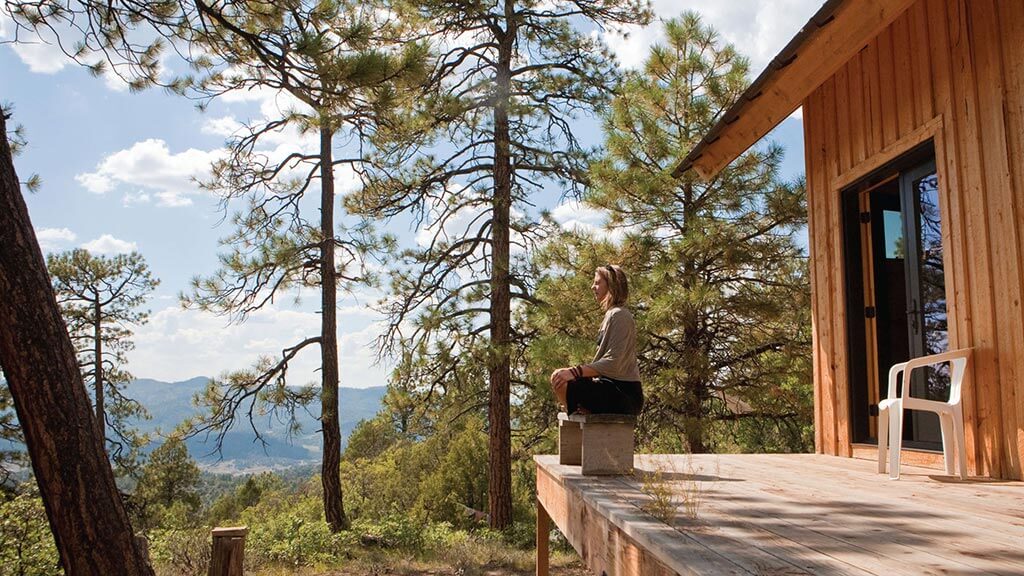
Meditation is not about trying to turn off your thoughts and emotions. It is about training in awareness and learning to observe your thoughts and feelings without judgment.
A simple practice that anyone can learn, is called The Nine Relaxation Breaths. This is a short breath cleansing practice that can be done at any time and is traditionally done at the beginning of any meditation practice.

Try the Practice of the Nine Relaxation Breaths
Close your eyes and keep them closed as much as possible until the end of the process. You will be taking nine deep relaxation breaths.
For the first three breaths, breathe into any physical tension you are holding in your body, then hooking that tension with the breath, release it with the out breath.
For the second three breaths, breathe into any emotional tension you are holding, notice where you are holding emotional tension in your body, then hooking that tension with the breath, release it with the out breath.
For the third three breaths, breathe into any mental tension or worries you are holding, notice where you are holding mental tension in your body, then hook that tension with the breath, release it with the out breath.
Sit quietly and notice how you feel. Open your eyes. (This is a breathing exercise for setting the stage in the Five-Step Process of Feeding Your Demons®, page 257 in Feeding Your Demons: Ancient Wisdom for Resolving Inner Conflict)
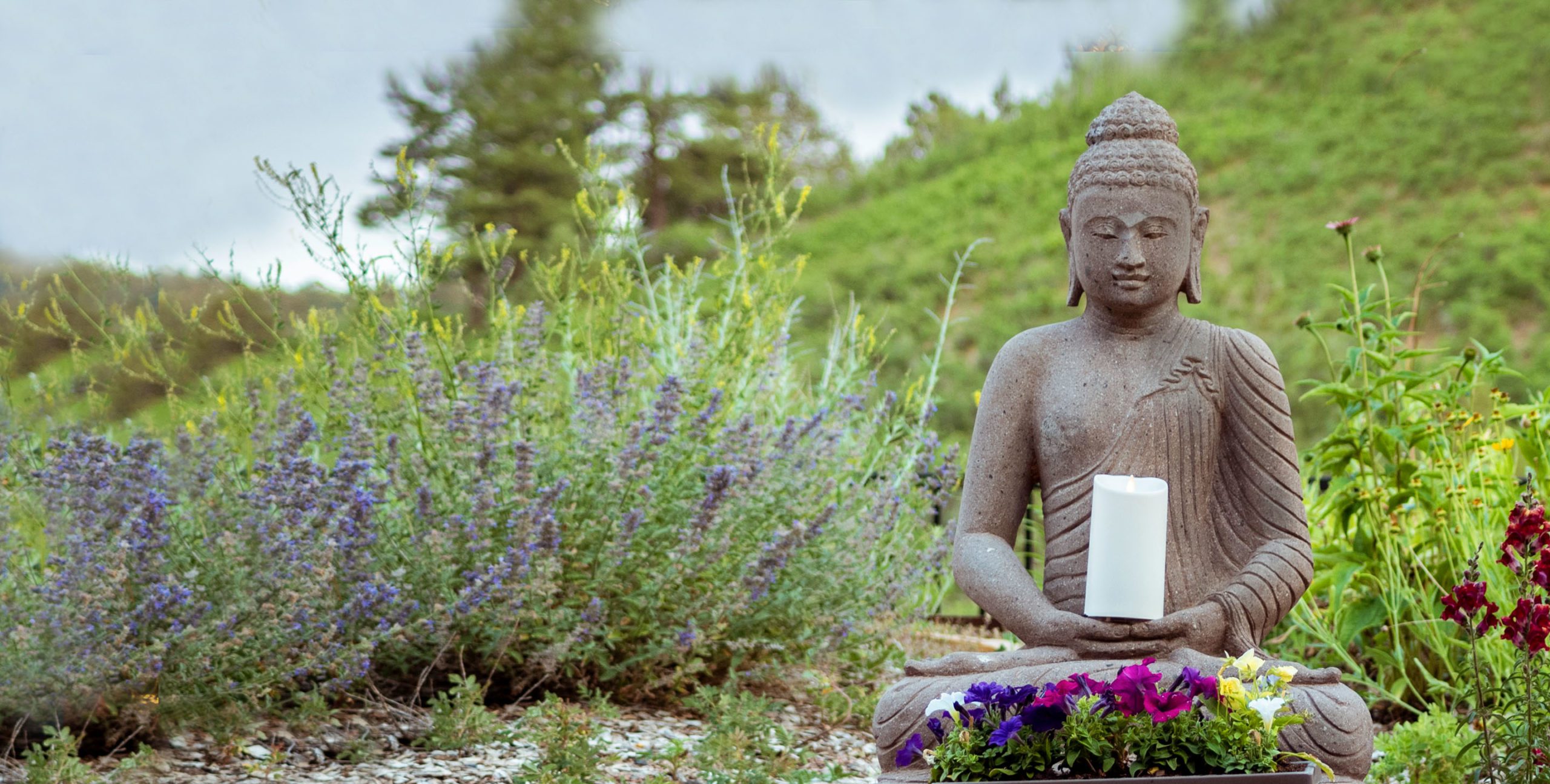
Shamatha (Skt. śamatha; Tib. ཞི་གནས་, shiné) or Calm Abiding meditation is a foundational practice that cultivates concentration and clarity of mind. The achievement of Shamatha, or meditative quiesence, is widely regarded in the Buddhist tradition as an indispensable foundation for the cultivation of contemplative insight (Vipashyana) and other more advanced meditative techniques.
Lama Tsultrim learned several methods of Shamatha meditation from Apho Rinpoche and Trungpa Rinpoche over the many decades of her studies as a nun and a lay practitioner. The method of Shamatha taught at Tara Mandala is from Lama Tsultrim’s study and practice under Trungpa Rinpoche.
Instructions on Shamatha Meditation with Lama Tsultrim Allione
Vipashyana (Skt. vipaśyanā; Tib.ལྷག་མཐོང་, lhaktong) means “special insight” and refers to the contemplative insight that dawns when one sees into the true nature of self and phenomena. The image that Trungpa Rinpoche used for Vipashyana was that of “a flash of lightning in a clear night sky.” The illumination that occurs due to Vipashyana gives rise to the experience of ‘non-self’, which the Buddha taught as the key to awakening to our true nature, enlightenment.
Shamatha meditation is taught at Tara Mandala in the Sutrayana Online Course and in various retreats throughout the year. Walking meditation is also taught as a way to bring mindfulness into your daily activities. See our calendar for upcoming programs that teach Shamatha meditation.
Learning to meditate is like learning any other skill; it takes consistent practice to gain ease and proficiency. It is important to have a qualified teacher as you progress along the path to guide you in your experience and answer questions as they arise.
Another introductory practice that can be done by anyone at any level is the five-step Feeding Your Demons® Process developed by Lama Tsultrim. This process distills the teachings and practice of the 11th-century Tibetan yogini Machig Labdrön for the Western practitioner and is laid out in her book, Feeding Your Demons: Ancient Wisdom for Resolving Inner Conflict. The method enables one to offer compassion and understanding to one’s inner ‘demons’ rather than engaging in a struggle with them. This allows the psyche to move from polarization toward integration.
You can learn the transformative five-step practice of Feeding Your Demons® in our Feeding Your Demons® Kapala Level I Course..Find out more about our Feeding Your Demons® Certification Program if you would like to become a certified facilitator and benefit others.
Guided practice of Feeding Your Demons® with Lama Tsultrim Allione
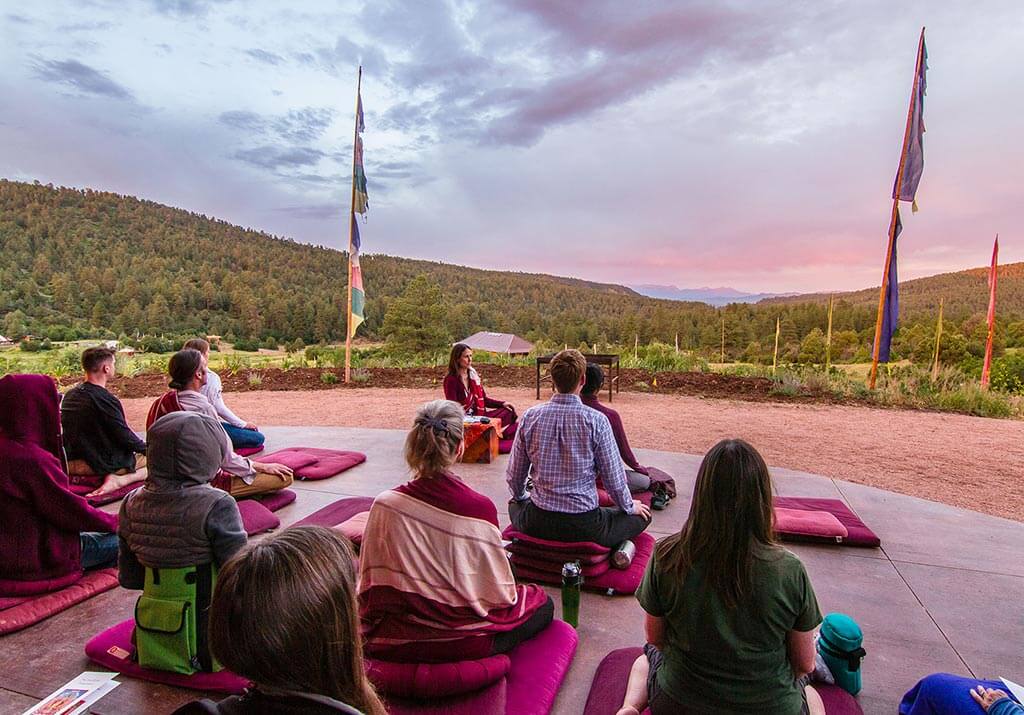 Photo credit: Josh Brownlee
Photo credit: Josh BrownleeDeepen Your Practice with Mahayana Principles
In Tibetan, the term for meditation is gompa, which means “to familiarize.” It is called this for a reason. Gaining comfort and ease in meditation takes practice and patience. We can’t expect to get it right or perfect right away, it will take time to learn new ways to relate to your own mind, your own thoughts and feelings. When beginning a meditation practice, what is most important is to meditate consistently and not give up. There may be flurries of thoughts, emotional upheavals, or other experiences that feel like setbacks. That’s OK. Just keep practicing, keep familiarizing yourself with the practice, and try to remain free of expectation and attachment. This is all part of the “practice.” As many wise teachers have taught, the path itself is the goal. It is more about the journey than the destination.
If you have learned Shamatha meditation and have been engaging in daily or frequent practice, we recommend learning quintessential Buddhist practices that further bring your meditation efforts inline with how you relate to the world:
The Four Immeasurables, Lojong (Mind Training) & Cultivating Bodhicitta
Learn about the four qualities to be cultivated through contemplation and meditation: Love, Compassion, Equanimity, and Joy. These are foundational teachings for all practitioners. In addition, Lojong, or Mind-Training, slogans are pith statements that help us to transform adversity and joy onto the path of wholeness and awakening. These are key teachings on compassion, including the meditation practice of Tonglen (Sending & Taking).

In our Mahayana Online Course you can learn about the Bodhisattva path of compassion and wisdom. You will learn the Four Immeasurables and Tonglen meditation. You will also learn how to cultivate the heart of awakening, Bodhicitta. That is, how to cultivate compassion for yourself and others.
Discover Vajrayana
At its core, Tara Mandala focuses on the teachings of the Vajrayana vehicle, and within that the teachings of the Great Perfection (Dzog Chen) and the lineage of Machig Labdrön, the founder of the Chöd lineage.
Once you have experienced meditation and its benefits, you can learn about the emergence of Tantra, Yoga, and the sacred feminine in Tara Mandala’s Vajrayana Online Course as well as receive the teachings and transmissions of the Five Male Buddhas and the Yab-Yum Mandala.
Tara Mandala has several long-term practice paths for practitioners who would like to develop a daily practice and move through a series of practices to develop themselves:
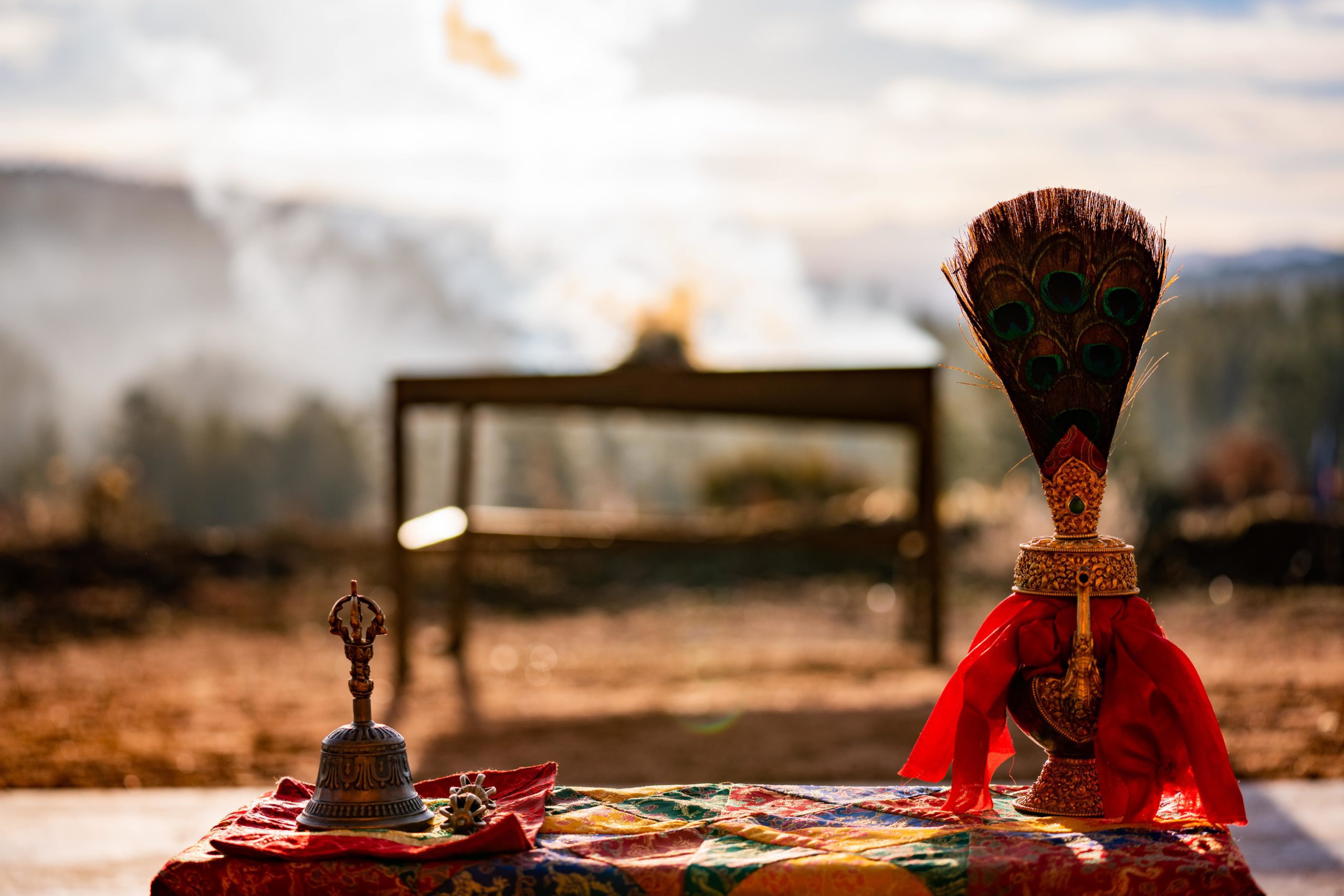 Photo by Josh Brownlee
Photo by Josh Brownlee Photo by Josh Brownlee
Photo by Josh BrownleeOur Magyu: The Mother Lineage, developed by Lama Tsultrim Allione, is an innovative path rooted in traditional Buddhist teachings, emphasizing the importance of both spiritual and emotional growth of the individual.
The Wisdom Rising: Mandala Training Program offers an exploration into the ancient Buddhist template of the mandala as it applies to our inner path of transformation and our outer experience in the world.
The Ösel Nyingtig: Heart Essence of Luminosity is a multiple-year program for dedicated practitioners who desire a profound and direct path to realization. Lama Tsultrim Allione and her son Dorje Gyaltsab Tulku Ösel Dorje (Costanzo Allione) teach together for the first time.
Our Gateway Program consists of a traditional Vajrayana three-year solitary retreat curriculum in the Dzinpa Rangdrol (Self Liberation of Clinging) teachings, adapted for the modern practitioner living in the world.
Many of the retreats at Tara Mandala may be attended by anyone, whenever prerequisites are required they will be listed clearly.
Visit our complete listing of retreats to begin your journey in Vajrayana or contact the registrar here for further guidance
